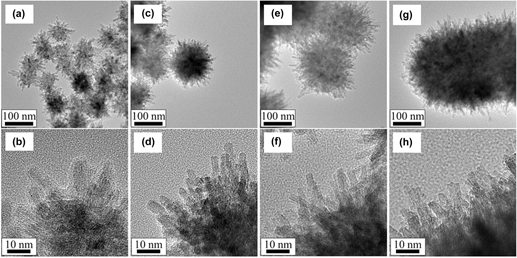Articles
The role of fuel to oxidizer ratio in solution combustion synthesis of TiO2 and its influence on photocatalysis
-
- Published online by Cambridge University Press:
- 03 July 2017, pp. 2764-2772
-
- Article
- Export citation
Molten salt synthesis of color-tunable and single-component NaY(1−x−y)(WO4)2:Eu3+ x ,Tb3+ y phosphor for UV LEDs
-
- Published online by Cambridge University Press:
- 16 February 2017, pp. 1548-1554
-
- Article
- Export citation
Structure and electrochemical performance of LiFePO4 modified with mononuclear and binuclear phthalocyanines as cathode materials
-
- Published online by Cambridge University Press:
- 09 February 2017, pp. 1168-1176
-
- Article
- Export citation
Influence of solid solution strengthening on the local mechanical properties of single crystal and ultrafine-grained binary Cu–AlX solid solutions
-
- Published online by Cambridge University Press:
- 22 August 2017, pp. 4583-4591
-
- Article
- Export citation
The inverse parameter identification of Hill’48 yield function for small-sized tube combining response surface methodology and three-point bending
-
- Published online by Cambridge University Press:
- 21 March 2017, pp. 2343-2351
-
- Article
- Export citation
Invited Articles
Spiky niobium oxide nanoparticles through hydrothermal synthesis
-
- Published online by Cambridge University Press:
- 19 June 2017, pp. 3326-3332
-
- Article
- Export citation
Front Cover (OFC, IFC) and matter
JMR volume 32 issue 15 Cover and Front matter
-
- Published online by Cambridge University Press:
- 14 August 2017, pp. f1-f4
-
- Article
-
- You have access
- Export citation
Articles
Effect of Zn content on interfacial reactions of Ni/Sn–xZn/Ni joints under temperature gradient
-
- Published online by Cambridge University Press:
- 29 August 2017, pp. 3555-3563
-
- Article
- Export citation
Invited Article
Opportunities and challenges in probing local composition of organic material blends for photovoltaics
-
- Published online by Cambridge University Press:
- 14 February 2017, pp. 1982-1992
-
- Article
- Export citation
Invited Articles
Fabrication of ultralow-density quantum dots by droplet etching epitaxy
-
- Published online by Cambridge University Press:
- 26 October 2017, pp. 4095-4101
-
- Article
- Export citation
Front Cover (OFC, IFC) and matter
JMR volume 32 issue 20 Cover and Front matter
-
- Published online by Cambridge University Press:
- 26 October 2017, pp. f1-f4
-
- Article
-
- You have access
- Export citation
Articles
Effect of addition of Ni and Si on the microstructure and mechanical properties of Cu–Zn alloys
-
- Published online by Cambridge University Press:
- 25 April 2017, pp. 3137-3145
-
- Article
-
- You have access
- HTML
- Export citation
Crystallization properties of IrQ(ppy)2 organometallic complex films
-
- Published online by Cambridge University Press:
- 02 May 2017, pp. 1735-1740
-
- Article
- Export citation
The ductility and toughness improvement in metallic glass through the dual effects of graphene interface
-
- Published online by Cambridge University Press:
- 05 January 2017, pp. 392-403
-
- Article
- Export citation
Back Cover (OBC, IBC) and matter
JMR volume 32 issue 20 Cover and Back matter
-
- Published online by Cambridge University Press:
- 26 October 2017, pp. b1-b8
-
- Article
-
- You have access
- Export citation
Articles
Fabrication and magnetic properties of ordered Co100−xPbx nanowire arrays electrodeposited in AAO templates: Effects of annealing temperature and frequency
-
- Published online by Cambridge University Press:
- 07 March 2017, pp. 1177-1183
-
- Article
- Export citation
Dual effects of co-electrodeposition of CeO2 nanoparticles on the grain growth of nanocrystalline Ni matrix
-
- Published online by Cambridge University Press:
- 16 May 2017, pp. 1741-1747
-
- Article
- Export citation
Microstructure evolution and enhanced mechanical properties of hot rolled Mg–3Al–Zn alloy with the addition of Al and Si as a eutectic alloy
-
- Published online by Cambridge University Press:
- 27 June 2017, pp. 3564-3573
-
- Article
- Export citation
JMR Early Career Scholars in Materials Science Annual Issue
Tailoring structure and properties of silica glass aided by computer simulation
-
- Published online by Cambridge University Press:
- 08 November 2016, pp. 174-182
-
- Article
-
- You have access
- Open access
- HTML
- Export citation
Corrigendum
Improvement of notch fatigue properties of ultra-high CM400 maraging steel through shot peening – CORRIGENDUM
-
- Published online by Cambridge University Press:
- 11 October 2017, p. 4272
-
- Article
-
- You have access
- HTML
- Export citation
















